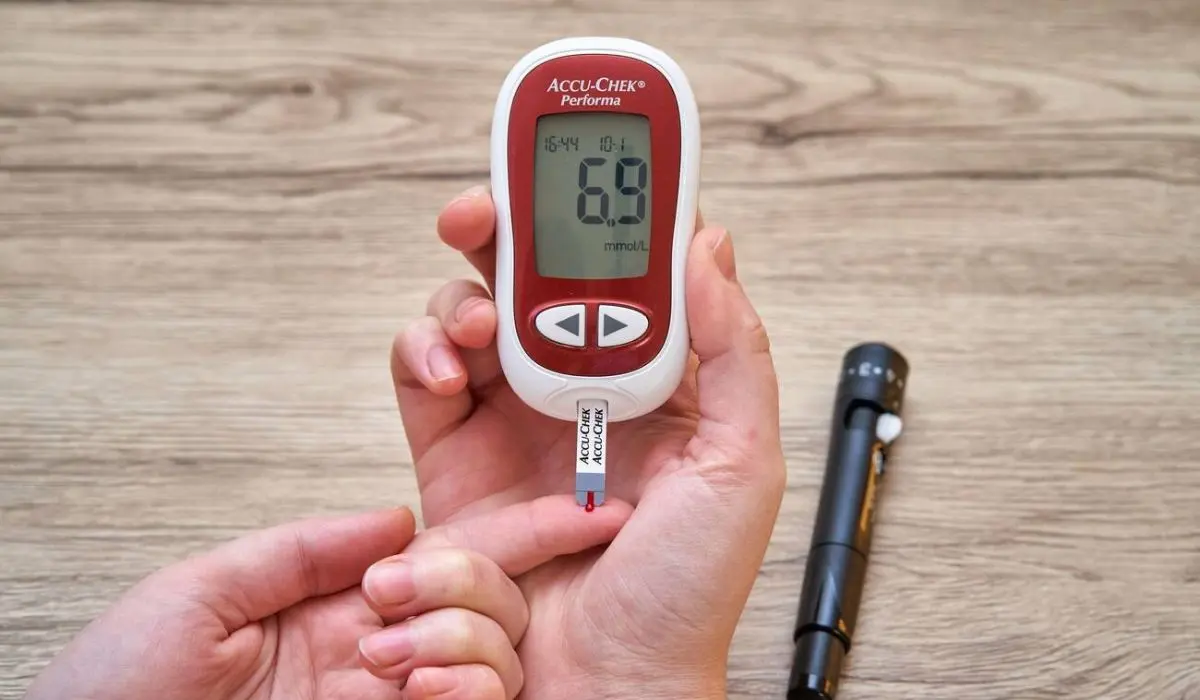Health
How Consuming Fiber Can Help Bring Down High Blood Sugar?

Fiber is essential to keep high blood sugar in check. It slows down the absorption of sugar into the bloodstream, thus avoiding spikes. Eating foods like whole grains, fruits, and vegetables, rich in fiber, helps regulate blood sugar levels.
Fiber adds bulk to food, making you feel fuller for longer. It also boosts digestion and prevents constipation, improving gut health.
What Is High Blood Sugar?
High blood sugar, also known as hyperglycemia, happens when glucose levels are too high in the bloodstream. This takes place when the body cannot produce enough insulin or doesn’t use it properly. High sugar levels can lead to health complications over time.

Steady sugar levels are necessary for good health. Fiber plays a huge role in controlling high sugar due to its ability to slow down the rate of carbohydrates entering the blood. This prevents sudden increases in sugar after meals.
Fruits, veggies, whole grains, and legumes are fiber-rich foods that provide key nutrients and aid digestion. Soluble fibers such as oats and flaxseeds form a gel-like material in the gut, which helps slow digestion and nutrient absorption. Insoluble fibers, found in wheat bran and veggies, add mass to stool and help with regular bowel movements.
Other than controlling sugar levels, fiber also helps with weight management by making one feel full and cutting down on calorie intake. It reduces the risk of type 2 diabetes by increasing insulin sensitivity and reducing insulin resistance.
The Role Of Fiber In Managing Blood Sugar Levels
Fiber is key for good blood sugar control. It slows the absorption of glucose, keeping levels steady during the day. Foods like whole grains, fruits, and veg are fab for this. They release glucose slowly, preventing sharp increases or drops in blood sugar.
Plus, fiber adds bulk to meals and helps with weight, reducing the risk of diabetes. It also improves insulin sensitivity, making it easier for cells to take up glucose.
Fiber does more than just keep blood sugar in check. It helps nourish gut bacteria and aids digestion. Increasing your fiber intake is simple. Start by gradually adding more fruits and veg into meals and pick whole grain cereals or bread. Don’t forget to drink lots of water – fiber absorbs it in the digestive tract.
Types Of Fiber That Help Control High Blood Sugar
To better control high blood sugar, explore the types of fiber that can assist you. Soluble fiber and insoluble fiber are the key solutions here. Each of these sub-sections offers unique benefits that contribute to managing your blood sugar levels effectively.
▪️ Soluble fiber
Soluble fiber is one powerful weapon to help control high blood sugar. It dissolves in water and forms a gel-like substance in the intestines, which slows down the absorption of glucose into the bloodstream.
▪️ Insoluble fiber
Insoluble fiber is a must-have for optimal digestion. It adds bulk to your stool, preventing constipation and promoting regular bowel movements. Plus, it helps you manage your weight. It helps you feel full, reduces cravings, and prevents overeating.
In addition, this type of fiber helps beneficial gut bacteria grow. This aids in digestion and optimal nutrient absorption. Insoluble fiber also helps reduce the risk of developing certain diseases, such as colon cancer, hemorrhoids, and diverticular disease.
How To Incorporate Fiber Into Your Diet?
To incorporate fiber into your diet effectively and control high blood sugar, consider the following solutions: Food sources rich in fiber and recommended daily fiber intake.
▪️ Food sources rich in fiber
Fiber-rich foods are a must for a healthy diet. Here are some top sources:
- Fruits like bananas, apples, and berries are not only sweet but also full of fiber.
- Veggies like broccoli, carrots, and Brussels sprouts are packed with fiber. Add them to your salads or stir-fry them for deliciousness.
- Whole grains like brown rice, quinoa, and whole wheat bread retain the bran and germ layers. These are both fiber-rich.
- Beans, lentils, and chickpeas are great for fiber and protein – add them to soups, stews, or salads.
▪️ Recommended daily fiber intake
Fiber is vital to a healthy digestive system. It helps with bowel movements, weight control, and feeling full. Everyone needs enough fiber in their diet.
Here are some tips for increasing fiber intake:
- Eat more fruits and veggies – they have lots of fiber. Think berries, broccoli, carrots, and spinach.
- Choose whole grains over refined ones. Examples include wheat bread, brown rice, quinoa, and oats.
- Legumes are great! Try beans, lentils, chickpeas, and peas. Add them to stews, salads, or soups.
- Snack smart – opt for nuts, seeds, or dried fruit instead of processed snacks.
Conclusion:
Fiber is a great tool for managing high blood sugar levels. It regulates glucose absorption, improving insulin response and reducing diabetes risk. Moreover, it promotes satiety, helping with weight management and preventing excess calorie intake. Studies show fiber-rich foods, like whole grains and legumes, lower the risk of type 2 diabetes.
Fiber is also important for gut health. It acts as a prebiotic, feeding good bacteria in the intestines. These bacteria break down indigestible fibers into short-chain fatty acids (SCFAs). SCFAs improve insulin sensitivity and reduce inflammation. Plus, they increase hormones that regulate hunger and satiety.
